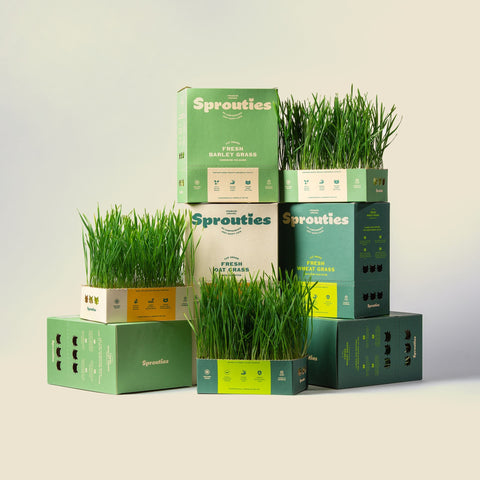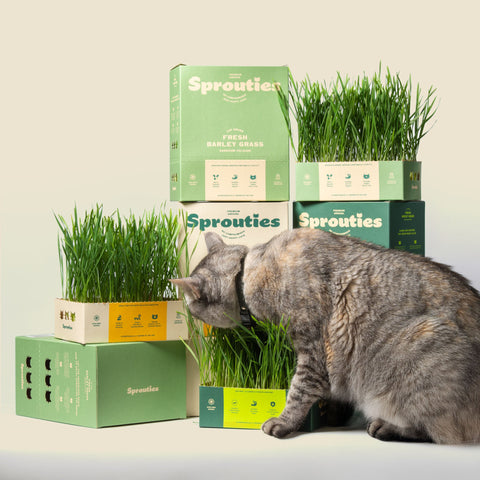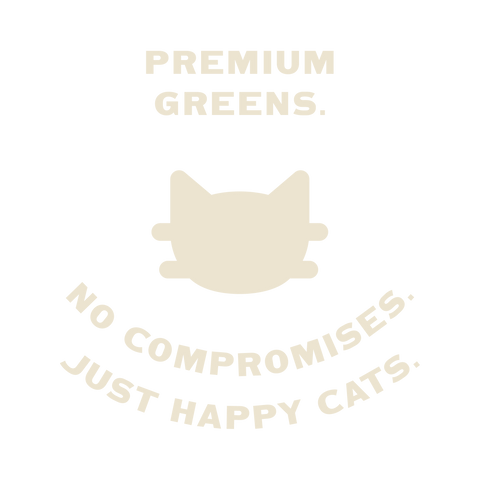Cats bring endless joy (and curiosity!) to our lives, but that same curiosity can put them at risk when it comes to houseplants. A veterinary report found that nearly 1 in 5 emergency vet visits involve accidental plant ingestion, with many cases caused by common decorative plants. For urban cat parents, knowing how to create a green and cat-safe home is essential.
This blog will guide you through toxic houseplants to avoid, cat-friendly alternatives, and how to balance your love for greenery with your cat's health and happiness.
The Hidden Dangers of Common Toxic Houseplants
Houseplants can brighten a home, but some may pose serious risks for your feline friend. Cats often chew on plants to satisfy instincts or out of boredom, but when toxic plants are within reach, it can lead to symptoms ranging from mild irritation to life-threatening reactions.
Here are some toxic plants commonly found in households and their effects on cats:
1. Peace Lily (Spathiphyllum spp.)
- Why it’s dangerous: Peace Lily contains insoluble calcium oxalates, which cause painful irritation when chewed.
2. Dieffenbachia (Dumb Cane)
- Why it’s dangerous: Its sap contains compounds that cause extreme burning and swelling in a cat's mouth.
3. Philodendron
- Why it’s dangerous: Aesthetic yet harmful, philodendrons produce calcium oxalate crystals that irritate tissues upon contact.
4. Pothos (Epipremnum aureum)
- Why it’s dangerous: Easy to maintain but not safe for cats, Pothos plants release chemicals that cause mouth and digestive irritation.
5. Aloe Vera
- Why it’s dangerous: Despite its healing properties for humans, Aloe Vera contains aloin, which is toxic when ingested by cats.
6. Snake Plant (Dracaena trifasciata)
- Why it’s dangerous: Snake Plants contain saponins, a chemical that leads to nausea and vomiting in cats.
7. Sago Palm
- Why it’s dangerous: Sago Palm is one of the most toxic plants for cats. Even small consumption can lead to severe liver failure.
If your cat has access to any of these plants, consider replacing them with safer alternatives.
Safe Green Alternatives for Cat Parents
Thankfully, you don’t have to choose between keeping greenery in your home and protecting your cat. There are plenty of cat-friendly plant options that pose no threat if nibbled on.
Cat Grass - An Ideal Alternative
Cat Grass isn’t technically a “grass” but a mix of edible greens like wheatgrass, oat, rye, or barley. Cats are naturally drawn to the soft texture and pleasant smell, and it’s perfectly safe and beneficial for their health.
Why Cat Grass is Good for Your Cat
- Supports Hairball Management: The fiber helps move hair through their digestive tract.
- Encourages Safe Chewing: It satisfies their natural need to chew without the risks of toxic plants.
- Provides Mental Stimulation: Chewing, sniffing, and interacting with grass is great enrichment for indoor cats.
- Reduces Interest in Toxic Plants: By offering an appealing alternative, you help keep your decor safe from nibbling.
Why Choose Sprouties Cat Grass?
Sprouties elevates cat grass to another level. It is hand-grown in the UAE, using a sustainable, hydroponic method to ensure no pesticides or harmful chemicals reach your pet. Freshly delivered to your home, Sprouties offers a natural alternative that both you and your cat will love.
What Sets Sprouties Apart:
- Delivered fresh and ready to use, with no grow-your-own setup required.
- Pesticide-free, hydroponically grown for clean, safe feeding.
- Handcrafted in the UAE to ensure premium quality for your pet.
- Provides optimal enrichment while helping protect your other plants.
With Sprouties, your cat’s wellbeing takes center stage, all while complementing your love for greenery.
How to Create a Safe Green Space for Your Cat
Healthy and happy cats are curious but protected cats. Here’s how you can design a green, cat-safe home environment:
1. Use Strategic Plant Placement
Keep toxic plants out of reach by placing them on high shelves, inside glass terrariums, or in hanging planters that your cat can’t access.
2. Monitor Behavior
If your cat exhibits interest in chewing greenery, monitor their behavior and make a mental list of the plants that attract them the most.
3. Redirect Attention with Safe Alternatives
Introduce cat grass like Sprouties into their environment. Place it in spots your cat naturally gravitates to, such as near windows or their favorite lounging area, to encourage safe exploration.
4. Consult Experts
When in doubt, ask a veterinarian or plant specialist about specific plants and pet safety. Always err on the side of caution.
A Greener, Safer Home for All
Safety doesn’t mean sacrificing your love for plants or your cat’s wellbeing. By choosing non-toxic green options like Sprouties cat grass, you’re offering your feline friend a safe, engaging outlet for natural instincts while creating a beautiful, balanced home.
Sprouties offers an artisanally hand-grown solution for urban cats and their parents. Protect your cherished plants, enrich your cat’s life, and bring harmony to your space.




